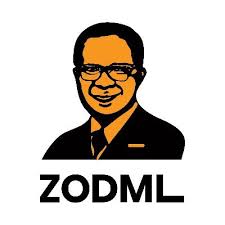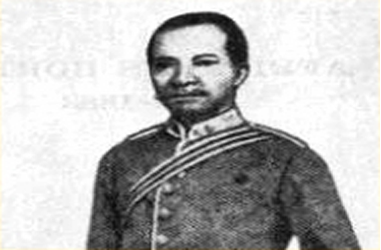Dr James Beale Africanus Horton was the second person of Nigerian descent to qualify as a medical doctor having attained his MD from the University of Edinburgh in August 1859, ten months after William Broughton Davies, the first Nigerian to qualify as a medical doctor. Both men served with distinction in the British Army Medical Services as Staff Assistant Surgeons. Horton, however, would further distinguish himself through his writings on medical subjects and advocacy for the establishment of medical schools and universities in West Africa.
Early Life and Education
Born to Igbo parents in the village of Gloucester, Sierra Leone, on June 1, 1835, he was the lone survivor of out eight children. He was educated at the village school in Gloucester under Reverend James Beale. He entered the Sierra Leone CMS Grammar School in 1847; there, his studies included Latin, Greek, and English literature, which provided the classical education which was to feature subsequently in his prolific prose. Horton went on to the Fourah Bay Institute (now known as Fourah Bay College) where, like William Davies before him, he spent two years with the intention of training for the ministry. When in 1855 the British government wanted to train promising West Africans for medical posts in the British Army, Horton, who had by then had made his mark as a potential intellectual, was chosen and sent to London. He graduated from King's College in 1858 after a successful undergraduate career. Dr R. Jelf, the principal of the College at the time, commended in a testimonial “the excellent conduct and diligence of Dr James B. Horton” during his studentship when “he gained the prize for surgery and five certificates of honor [sic] in different branches of medical education.” Upon graduation, the principal and professors recommended to the Council that Horton be elected to the Associateship of the College, “a distinction which always implies not only proficiency in studies, but also an unimpeachable academic character.” On October 19, 1858, Horton matriculated at the University of Edinburgh. In March 1859, he submitted his thesis entitled "The Medical Topography of the West Coast of Africa, with Sketches of its Botany" for the MD which he gained with commendation on August 1, 1859. On the title-page of his thesis he referred to himself as a "native of West Africa" and christened himself "Africanus". Many scholars of African nationalism highlighted this new name as evidence of Horton's political awakening.
Horton was married twice: first to Fanny Marietta Pratt and after her death, to Selina Beatrice Elliot.
Career
In September 1859, Horton was commissioned in the British Army as Staff Assistant Surgeon for services in West Africa. Over a twenty-year period of service he would spend most of his time in the Gold Coast (now Ghana) and Sierra Leone. Following his retirement from the British Army in West Africa in 1880 as a Surgeon-Major he took up banking and against the odds, succeeded in founding the Commercial Bank of West Africa in December 1882.
Death Horton died in Sierra Leone in October 1883 from a severe attack of erysipelas, a painful skin infection.
Works and Legacy
Horton's first major medical publication was his MD thesis. His theme was to familiarise the doctor seeking to practise medicine in West Africa with the climatic conditions of the various countries, from the archipelago of theSpanish Canaries to the island of Fernando Po. His detailed description of the mosquito was the first to suggest that there was a possible link between that "sanguinary gnat" and malaria fever. Horton wrote at considerable length and with authority on the botany of West Africa and mentioned some plants which were used for therapeutic purposes: the bark of the mangrove tree as a fever reducer in the Gambia, the leaves of the castor oil plant as a cure for dry-mouth among the women of the Cape Verde Islands, and in Sierra Leone, the unripe pawpaw (or papaya) as a de-worming medication, and many others.
Horton's mastery of narrative prose and his thorough and wide classical education were evident in this work and his subsequent writing. He touched on environmental hygiene - which has always been an important aspect of modern medicine in Africa – and advised the inhabitants of Freetown to take annual holidays in the healthy sea district of Sierra Leone. He gave suggestions for the preservation of health in the tropics, a theme which echoed throughout his subsequent medical writings. His lengthy unpublished treatise on tropical diseases, which he sent to the London headquarters of the Church Missionary Society in 1861, was entirely devoted to this topic.
In 1867, Horton wrote his Physical and Medical Climate and Meteorology of West Coast of Africa with suggestions for Europeans on the preservation of health in the tropics. This book expanded some of the meteorological and geographical peculiarities of West Africa which Horton touched upon in his MD thesis in 1859, and included the experiences of his six years as an army doctor in West Africa. The work was an immediate success.
Horton's passionate plea for improved sanitation in Freetown gained the sympathetic ears of the colonial government, which almost at once instituted a Board of Health for the first time in the history of Sierra Leone. In 1868, Horton wrote an elegant monograph on guinea worm infestation based on his experience with the disease in Ghana, drawing on his profound knowledge of geology to explain its regional distribution. It was in the treatment of this disease that Horton made a unique contribution: apart from the time-honoured extraction of the worm by rolling it round a piece of stick (or a crow-quill, which Horton preferred), he recommended the use of the tincture of asafoetida which, when taken orally, rapidly destroys the parasite, with quick relief of pain. Horton came across this effective remedy through its good effect among Ghanaians.
Horton's greatest work was The Diseases of Tropical Climates and Their Treatment which was published in 1874 (he read the galley proofs while he was engaged in the Ashanti War of 1873). The work represented nineteenth-century concepts of diseases and their management, and miasmatic influences which emanated from decomposing matter were incriminated for producing almost every epidemic disease. The work won Horton credit for his superb skill and artistry as a writer. However, from the end of the nineteenth century, the great advances in medical science rendered much of Horton's work obsolete. Unfortunately, his early death robbed him of the opportunity to witness these changes and to include them in his monograph: another revised edition would probably have saved the book from the obscurity into which it has fallen. Horton, however, may be credited with providing one of the earliest descriptions of sickle-cell anaemia.
Alongside Horton's contributions to the advancement of modern medicine in West Africa he also advocated for the establishment of a medical school in West Africa for the training of Africans. In 1861, he forwarded to the War Office in London a letter in which he pleaded that “a small Government Medical Establishment be made at Sierra Leone and that certain young men, not above the age of 20, who have made some proficiency in Latin, Greek and Mathematics be selected from these in the CMS college or schools from the four colonies and settlements of West-Africa-Gambia, Sierra Leone, Lagos and Cape Coast... They should be prepared in the preliminaries of medicine, anatomy, physiology, chemistry, botany (of Africa), natural history, hospital practice and pharmacy, for a certain period, from one year and a half to two years.” This recommendation was turned down, but he remained undeterred. In 1871, he advocated in favour of a West African University to enable Africans to advance their education, which at the time was circumscribed "to the study of only scripture, history, geography, grammar, and arithmetic." He argued that such an institution was needed to cater for the study of botany, mineralogy, physiology, chemistry, engineering, architecture, "and of other kindred subjects which are the fundamental sciences which elevate the mind and develop the intellectual growth of any race." A West African University did not come into existence then but the Fourah Bay College of Sierra Leone was affiliated to Durham University in 1876. One of the first three students to gain the Bachelor of Arts degree at Fourah Bay College was Obadiah Johnson, who went on to qualify as a medical doctor as well.
Sources
The above was compiled using the following:
- Professor Adelola Adeloye’s “Some Early Nigerian Doctors and Their Contribution to Modern Medicine in West Africa” Medical History, 1974, vol. 18, p. 274-293.
- National Center for Biotechnology Information website
- Wikipedia
- James Africanus Beale Horton, Letters on the political condition of the Gold Coast since the exchange of territory between the English and the Dutch Governments on January 1, 1868, together with a short account of the Ashantee War, 1862-4, and the Awoonah War, 1866, 2nd ed., with a new introduction by E. A. Ayandele, London, Cass, 1870, p. 7.
- R. Schram, A history of the Nigerian health services, Ibadan University Press, 1971, p. 64.
- CMS C.A. 1/0/117-120. Jelf on Horton, 3 November 1858. See n.3
- Shepperson, 'An early African graduate', Univ. Edinb. Gaz., 1962, 32: 23-26. See n.6
- Lagos Times, 10 January 1883.
- D. Nicol, James Africanus Beale Horton: the dawn of nationalism in modern Africa, London, Longmans, 1969, p. 12.
- J. A. B. Horton, 'On the medical Topography of the West Coast of Africa, with sketches of its botany', M.D. thesis University of Edinburgh, March 1859.
- Horton's 'Treatise on tropical diseases', 10 April 1861.
- J. A. B. Horton, Physical and medical climate and meteorology of the West Coast of Africa, London, Churchill, 1867, pp. 82-94.
- F. N. L. Poynter and K. D. Keele, A short history of medicine, London, Mills and Boon, 1961, pp. 54-55.
- A. Adeloye, 'Sickle-ell anaemia', Br. med. J., 1973, ii, 304-305
- J. A. B. Horton, West African countries and peoples, London, W. J. Johnson, 1868, pp. 46-50
- T. J. Thompson, The jubilee and centenary volume of Fourah Bay College, Freetown, Sierra Leone, 1930, pp. 54-56. See n.15

